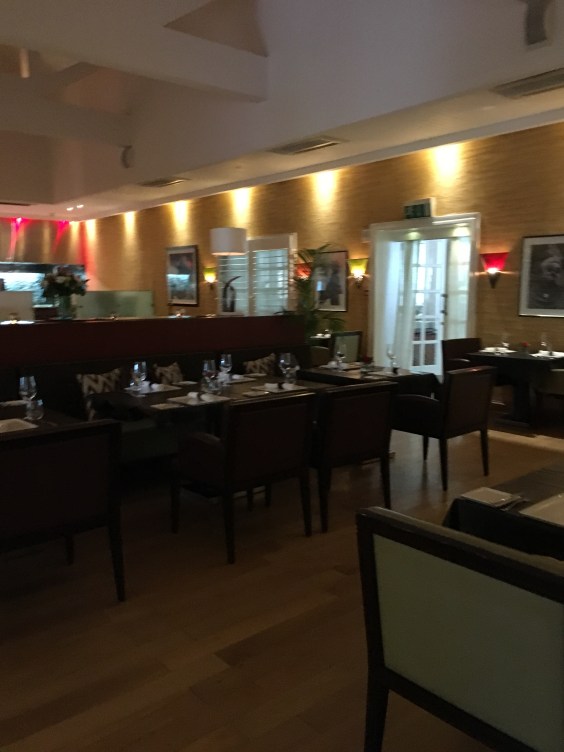Join us for another throwback Thursday escape from COVID-19 isolation to a bygone era of business travel (wow, I’m saying that already!). Today’s post, fresh from the CD archives of unpublished posts, takes us back to Nairobi, Kenya to dine at Tatu, located within the storied Fairmont The Norfolk Hotel in Nairobi’s Central Business District. Hungry for more adventures in Kenya? Check out past posts about the lovely, complex city of Nairobi here and here.
Hotel restaurants don’t always appeal to the adventurous; convenience and reliability (and, when traveling in an uncertain or developing environment, food safety) are the main attraction of hotel dining. Yet some of the best dining experiences are affiliated with a hotel.
A few of my best Nairobi dining experiences came from exactly this environment. Situated within the historic Fairmont The Norfolk Hotel– which has hosted everyone from Winston Churchill to Sally Field, its signature restaurant, Tatu, offers a premier dining experience that is worth braving the insanity that is Nairobi traffic for a trip across town.
I found myself a patron of Tatu on multiple occasions over the course of a few business trips to Nairobi, and I was repeatedly delighted by the quality and presentation of the food, as well as by impeccable service. The Norfolk Hotel opened in 1904, during the days of British colonialism, and the hotel’s design really harkens back to those days. Tatu’s atmosphere, however, is a fast-forward to 21st century Kenya today, with sleek, minimalist decor.

Your meal starts with a hot towel, followed by the amuse bouche of the day. All of them seemed to involve chicken, and one seemed like a spooned version of a pot pie – not particularly exotic fare, but it was a nice touch to start to the meal that won’t alienate most palates.

Next comes the bread basket. A crowd favorite, it consists of a ring of pull-apart breads, each with differing ingredients – herb, tomato, multigrain, and pumpernickel, for example. All surround a core of focaccia and topped with paper-thin lavash crisps and joined by grissini. The bread is served with a duo of flavored butter and/or cream cheese, which together are quite addictive and could easily spoil one’s meal.
Tatu’s menu of starters includes core crowd pleasers, as well as rotating seasonal specials. The pumpkin soup is especially comforting during the rainy season; a crab bisque pleased my colleagues. The crocodile fritters are pleasing (they taste like turkey!) and fairly light for a fried dish. As seems to be a requisite of any international restaurant these days, burrata is on the menu – served quite simply with minimal added salt, perched atop focaccia and itself artfully topped with pesto.
Main courses focus on meat dishes – plenty of steak options, a lovely roast half chicken, pork, and mutton; each may be accompanied by a range of side dishes and sauces. A colleague paired the roast chicken with the onion gravy (which is far better than it sounds). It was a winning combination. A few pastas and other options round out the international-friendly menu. The steaks are flavorful, if not the best cuts of meat I’ve had. I loved that a head of roast garlic and a few blistered vegetables accompany each meat dish.
On my first visit, the desserts were outstanding. On my second two, I wasn’t particularly inspired by the offerings and was typically so full from my main dish, bread, and starters to find out how well they compared to the previous experience. Nevertheless, Tatu and its wonderfully attentive staff will leave one last sweet memory, gracing the table with the hotel’s homemade chocolates before you depart. As a chocolate connoisseur, even I was impressed with the quality, variety, and unique shapes and flavors.
If you find yourself one day traveling to or through Nairobi, I highly recommend a stay at Fairmont The Norfolk, paired with a classy dining experience at Tatu Restaurant. It is a great introduction or farewell to Kenya and its colonial legacy.











